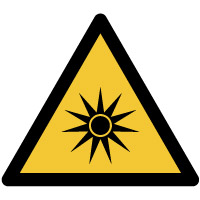UV Safety Information
UV-nitrate sensors have not supplanted traditional analytical methods such as ion-chromatography for quantitative analysis, but have become common practice as an invaluable screening method due to their inherent advantages of being chemical-free and field deployable.
YSI’s EXO NitraLED employs a UV-LED (center wavelength 235 nm) to generate UV-C optical radiation transmitted across an optical gap of 10mm where the transmitted optical signal is collected by a UV-enhanced photodiode. The sensor also compensates for interferences from organic matter using a second LED with a wavelength of 275 nm, which also emits UV-C/B optical radiation.

With repeated, prolonged exposure UV-C and UV-B radiation poses a potential health risk to skin and eyes (including such effects as Photokeratitis and Cataracts) in addition to other biological effects which include cancer causing damage to DNA. It’s important to be vigilant and follow YSI’s safety guidelines when handling an EXO NitraLED sensor.
 YSI is NOT responsible or liable for health conditions resulting from the misuse or mishandling of UV-based sensors, like EXO NitraLED.
YSI is NOT responsible or liable for health conditions resulting from the misuse or mishandling of UV-based sensors, like EXO NitraLED.
Safety Guidelines for EXO NitraLED Sensors
- Always assume the sensor LEDs are turned on and operating at full power when installed in an EXO sonde.
- DO NOT point an EXO NitraLED sensor at another person.
- DO NOT put fingers or any exposed skin near or inside the sensor's optical cell.
- DO NOT put eyes near or look into the windows of the optical cell.
- DO NOT place reflective items near the sensor's optical cell, which could reflect UV radiation from the sensor (e.g. metals, mirrors, watches).
- Wear proper Personal Protective Equipment (PPE) for UV light when handling an EXO NitraLED sensor installed in an EXO sonde. PPE includes safety glasses and nitrile gloves.
If you have any questions or concerns about UV safety, please contact us at info@ysi.com